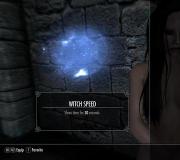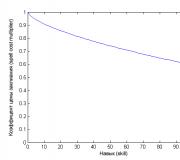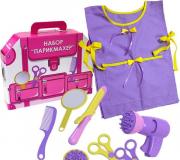Life is short, but art is long, and in the fight life wins. Essay based on the painting by Reshetnikov Arrived on vacation (description)
Reshetnikov painted this picture in 1948. It depicts children. The boy has just arrived home for the holidays. He happily salutes his grandfather, probably an excellent student. There is no fear in his gaze that his parents will scold him; on the contrary, his gaze is full of pride. The old man who stands opposite the boy is probably a grandfather and he is happy for his grandson. We can only assume that grandfather served in the war. And he considers his grandson a worthy replacement for himself in the family.
Looking at the picture, we can see a portrait of a military man hanging on the wall. Most likely, the photograph shows the boy's father. He probably died in the war, but the memory that his family keeps about him is sacred to them. Nearby we see the painting “Three Heroes”. It is not without reason that Reshetnikov portrayed the heroes of Russian epics and a soldier who died in the war. The artist wanted to show us the heroism of both heroes and ordinary soldiers. The image of a girl fades into the background, probably this is the boy’s sister. On the table we see unfolded notebooks and textbooks laid out, most likely she was studying her homework. It seems to me that she will neatly fold her belongings, remove them from the table, and the whole family will celebrate the boy’s arrival for the holidays.
The author managed to create a festive atmosphere on the canvas, a Christmas tree decorated in the corner of the room, a solemn and joyful meeting. I think that a grandfather is a role model for his grandson, especially since his father died in the war. And the grandson, in turn, loves his grandfather very much, not only because he gives him sweets, but also because he tells him different war stories. After all, there is no father left and you need to live on, you need to look for your ideal, someone you are not ashamed to be like, someone you are proud of and do not hesitate to introduce to your friends. I really liked this picture. It has a lot of family warmth and comfort. You want to return to this family because you know that they are always waiting for you there and you are always welcome.
Arrived on vacation
Fyodor Pavlovich Reshetnikov wrote the work “Arrived on Vacation” in 1948. Almost immediately this painting gained popularity among Soviet viewers.
In the foreground of the picture are an elderly man in glasses and, obviously, his grandson, a Suvorov veteran, reporting to him about his arrival. Judging by the decorated Christmas tree, the boy came for the New Year holidays. On the eve of the holiday and from the joy of returning home, happy lights shine in the child’s eyes. Judging by his upright posture, the grandfather is a former military man and accepts the report in accordance with military rules. He is pleased with the report and the behavior of his grandson. On the wall behind the boy hangs a portrait of a man. It is possible that this is his father, who died in the war for the liberation of his homeland. This means that the child’s decision to become a hereditary military man, to follow in the footsteps of his father and grandfather, was balanced and thoughtful. In this family, even epic heroes are revered, as evidenced by the painting “Three Heroes” by V. Vasnetsov, hanging on the wall.
In the background of the canvas there is a girl dressed in a formal school uniform. Apparently, she had recently returned home from class and was about to start doing her homework. But the arrival of her brother changed her plans. Obviously, the young housewife will now hide school supplies in her briefcase and set the festive table to celebrate the return of her Suvorov brother with the whole family. The cat, sensing the approach of dinner, sat down at the table like a proprietor.

F. P. Reshetnikov reliably conveyed the joyful feelings of a boy who arrived home for the holidays. Everything makes him happy: meeting his family, the approach of the New Year, a picture on the wall, a carpet in the center of the room, and even a knitted rug at the threshold. The author of the picture managed to assure the viewer of the happy future of this family.
Often asked in 8th grade.
- Essay based on the painting by Grigoriev Goalkeeper from the perspective of a fan, spectator (description)
- Essay based on Shishkin's painting Oak Grove, grade 3 (description)
A lot can be said about the painting “Oak Grove”. The author’s magnificent execution of the forest landscape evokes admiration and makes you think about the beauty of our nature.
- Essay based on the painting by Yuona The Sorceress winter 4th grade (description)
K.F. Yuon painted many canvases on the theme of winter and native nature. In his paintings you can see how he was overcome with excitement for the surrounding nature, and even for winter itself.
- Essay based on Tsyplakov’s painting Frost and the Sun, grade 9 (description)
Tsyplakov V.G. Most of his paintings were based on beautiful Russian landscapes, creating wonderful canvases depicting the seasons, weather and wonderful nature.
- Essay on the painting The First Greens by Ostroukhov
In the picture, we see an ordinary landscape typical of any village or suburb. The nature captured by the artist does not have any special colors; it is slightly dull and nondescript.
New Year's holidays at school and at the Suvorov Military School. The boy was released on vacation for his success in preparation.
New Year's holidays at school and at the Suvorov Military School. The boy was released on vacation for his success in preparation. Perhaps this is the same Mitya who received a bad grade and who was sent to the Suvorov School with its much stricter discipline for correction.
And here in front of us is a slender, fit boy, in full Suvorov uniform, with a government-issued suitcase and excellent bearing, a “military bone,” so to speak.
He gives his arrival report to his grandfather, as he was taught in school, and the grandfather, standing at attention, accepts his report. It is clear that the grandfather, who maintained an upright posture, was once a military man himself and remembers the past with joy. The atmosphere in the room is clearly festive. A sister, in a formal school uniform, is preparing the table, putting away notebooks and textbooks, next to there is a decorated Christmas tree, decorated with toys and garlands. A cat sits on a chair, waiting for a handout, but understands that there is nothing edible on the table yet and he waits patiently.
A simple table and a wooden chair tell us about a simple family, and a portrait of a man hanging on the wall perhaps speaks of a father, whose memory is kept in the family where he did not return from the war. Suvorov schools most often accepted children whose fathers were military men and died in the war. Such children received full state support, which, of course, greatly eased the financial situation of families left without a breadwinner.
You can see how glad the boy is to return to his family, that there is a familiar environment around him, it’s clear that he loves his grandfather and happily gives him his report.
As usual, on the floor in front of the entrance lies a rug, possibly knitted by the hands of the mistress of the house, but next to it lies a beautiful, colorful carpet.
We are happy for the boy, for his family and wish that everything in their lives turns out well.
The second picture from the trilogy by Fyodor Reshetnikov (The remaining pictures are “A D again” and “Re-examination”)
"Arrived on vacation"- a painting by People's Artist of the USSR Fyodor Reshetnikov in the style of genre painting, one of the brightest examples of the “socialist genre” in painting. The work was painted in 1948; for this painting (together with the canvas “Generalissimo of the Soviet Union I.V. Stalin”) the artist was awarded the Stalin Prize of the second degree in 1949. Located in the Tretyakov Gallery.
The painting “Arrived on Vacation” became one of the first and very successful experiments of Fyodor Reshetnikov (previously better known as a caricaturist) in the field of household painting.
The work is dedicated to a joyful event - the arrival of a Suvorov boy home for the holidays before the New Year. The grandson in military uniform half-jokingly reports his arrival to his grandfather, the boy’s face is lit up with a wide smile; the grandfather, standing at attention, “accepts the report.” The characters in the picture (a Suvorov soldier, his grandfather, a girl with a pioneer tie) are written with love and humor. The inner optimism of the picture, emphasized not only by the charm of its happy heroes, but also by the festive decoration of the house, evokes thoughts that the big war is over, and the boy has an open, bright future ahead. At the same time, the canvas is deeply dramatic: the artist does not answer where the brave warrior’s parents are. The fact that after the war, children whose mother and father died at the front were often taken to Suvorov schools, gives this understatement a tragic sound.
The painting “Arrived for Vacation” became one of the master’s most popular works. For many years, writing an essay on a work was offered to schoolchildren in Russian language classes. The total circulation of postcards with reproductions of the painting amounted to over 13 million copies. This is more than the circulation of any other postcard issued in the Soviet Union.
A reproduction of the painting “Arrived for Vacation” hangs on the wall of the room in another, no less famous, painting by Fyodor Reshetnikov from 1952, “Deuce Again.” It is interesting that the reproduction of the painting “Deuce Again”, in turn, is depicted in the artist’s painting “ Resit».
On December 14, 2013, a monument to graduates of Suvorov schools and cadet corps was unveiled on the territory of the St. Petersburg Suvorov Military School (Sadovaya Street, 26). The sculptural composition recreates the plot of the painting “Arrived on Vacation”: a small military man reports to his grandfather; The heroes of the monument also have a portrait resemblance to their prototypes. The monument to sculptor Karen Sarkisov was erected here on the initiative of the commander of the Western Military District, Anatoly Sidorov, who himself graduated from the Suvorov School, and to commemorate the 70th anniversary of the Suvorov and Nakhimov Schools in Russia.
Text - Wikipedia. 

07.09.2016
Description of the painting by Fyodor Reshetnikov “Arrived on vacation”
The canvas with the title “Arrived for Vacation” managed to win almost the same popular recognition as the famous painting “Deuce Again.” The spirit of patriotism exuding from this canvas brought its author Fyodor Reshetnikov an honorary Stalin Prize. At the center of the plot is a young Suvorov veteran who returned to his native land for the holiday holidays. The New Year is coming, and the boy’s mood, already overjoyed at meeting his family, will steadily rise. The newcomer has not yet had time to take off his warm coat, and still does not let go of the suitcase. He is met by his grandfather - quite possibly a retired military man. A special ritual unfolds between relatives from the threshold: the inspired grandson decorously gives a report, not hiding a radiant smile, and the grandfather tries his best to match him, although it is felt that he is barely holding back happy emotions.
The atmosphere in the house is filled with sweet anticipation of celebration. The forest beauty is already dressed up, and the festive table will soon be filled with delicious dishes. A schoolgirl, obviously the protagonist’s sister, is actively working on preparing the New Year’s celebration. A fluffy cat sits proudly on a chair next to the girl: he patiently waits for the moment when the owners generously share a tasty morsel with him. The assumption that the boy’s grandfather was also once in the service is partly confirmed by the portrait on the wall of the room. On the other hand, the man depicted on it could easily be the father of the hero, because in those days Suvorov schools were everywhere open to the sons of fallen front-line soldiers. The patriotic sentiments of the family are further emphasized by the reproduction of “Three Heroes” - the embodiment of Russian dedication, boundless willpower and devotion to their native land.




